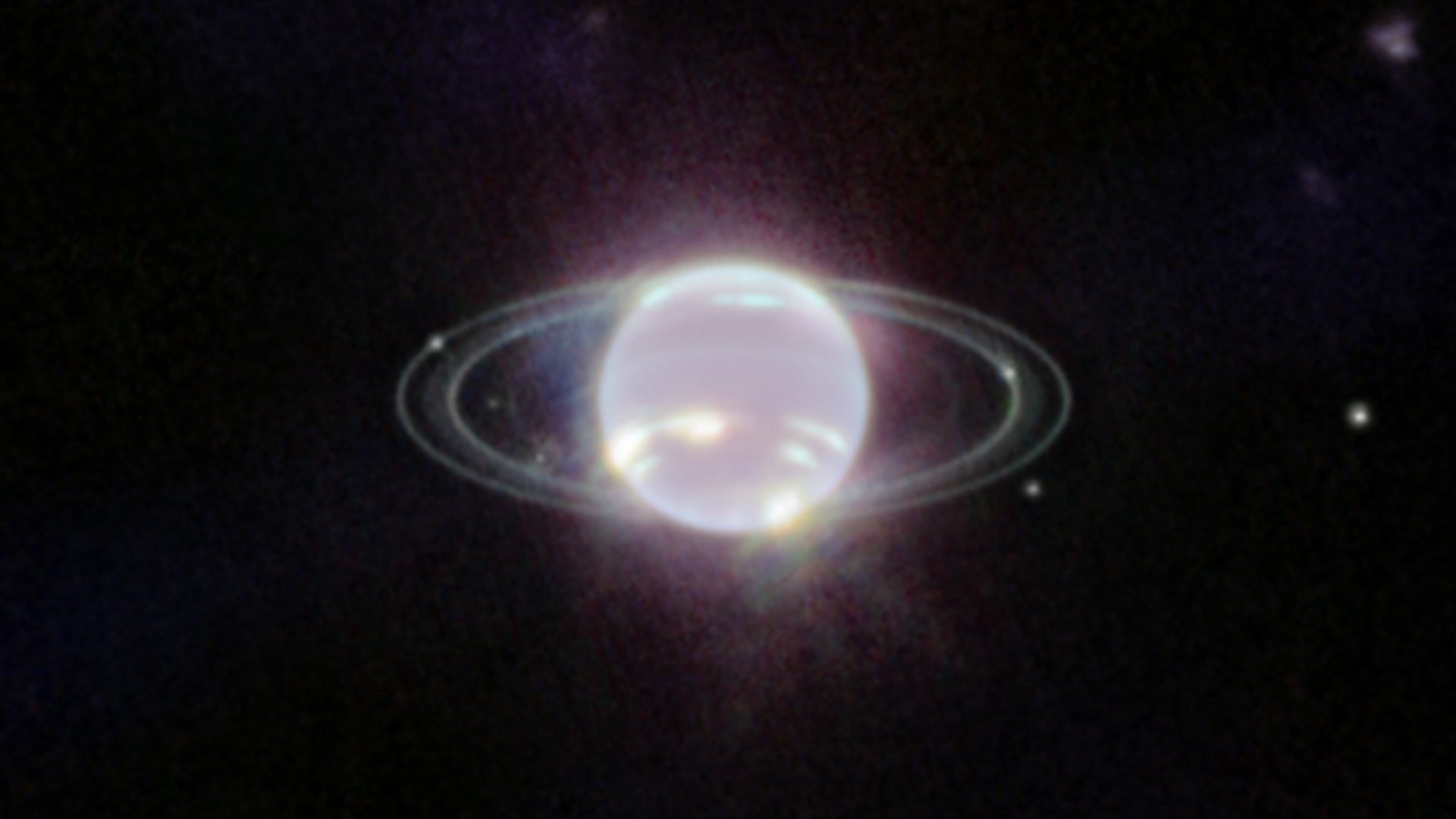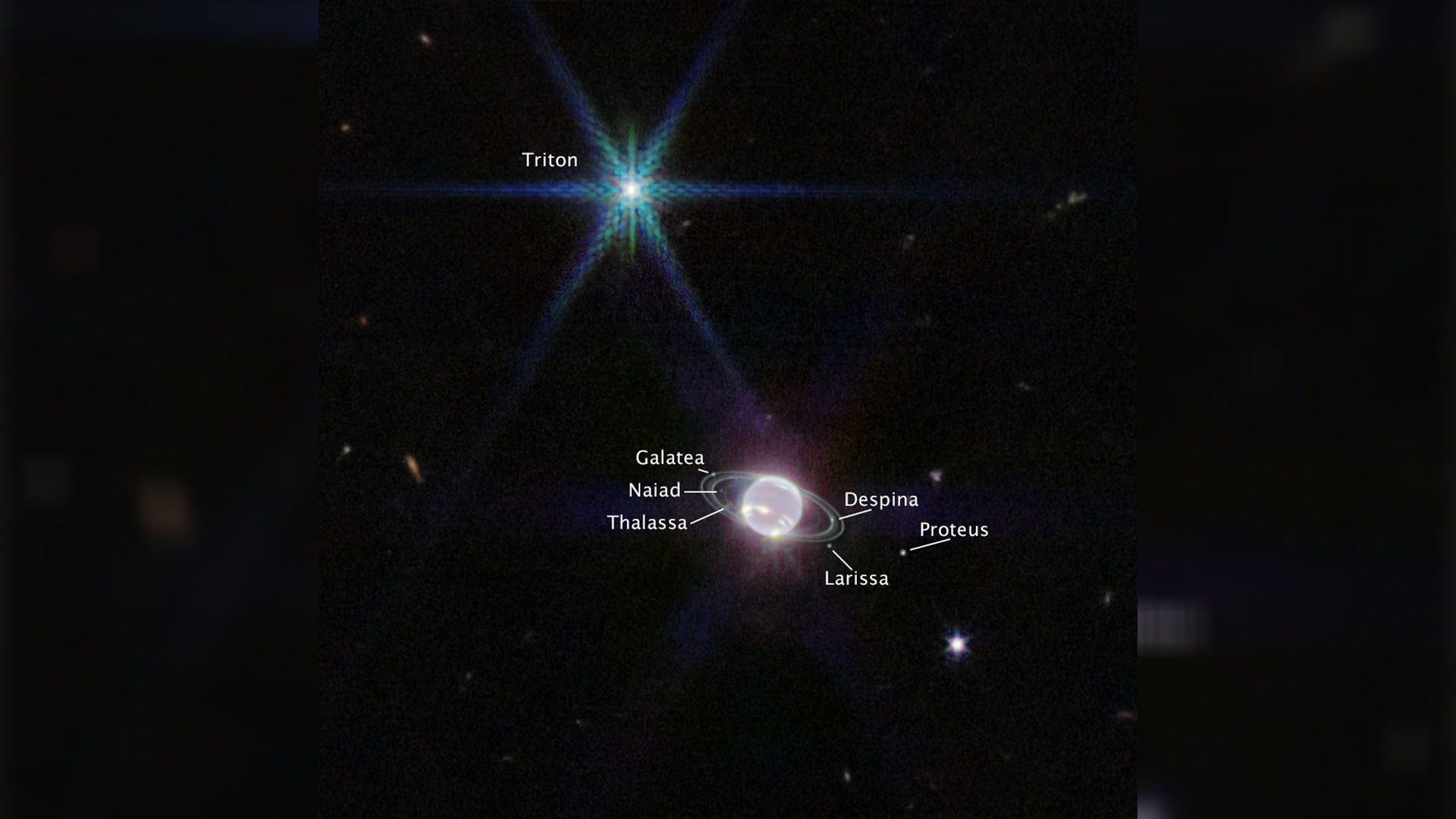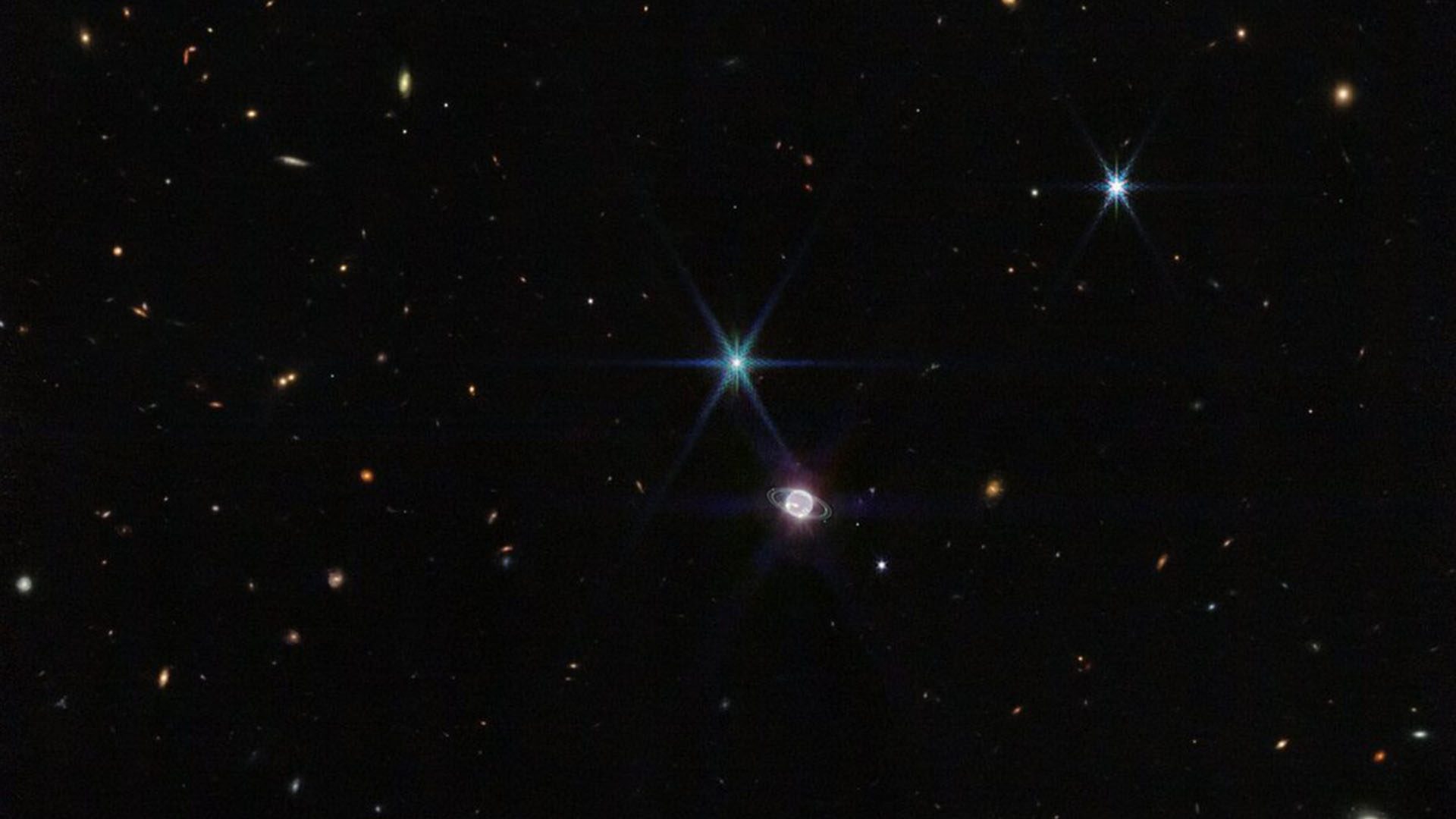One of the latest images from NASA’s James Webb Telescope captures the clearest view of Neptune and its rings seen in decades. Some of these rings have not been detected since 1989, and some have never been seen at all.

Webb’s Findings
The image, captured with Webb’s Near-Infrared Camera (NIRCam), depicts the planet’s bright rings and fainter dust bands. The dust bands appear as fuzzy particles in between the brighter, ice-dominated rings. As Heidi Hammel, an interdisciplinary scientist for Webb, notes, “It has been three decades since we last saw these faint, dusty rings, and this is the first time we’ve seen them in the infrared.”
Because of the wavelengths Webb captures, Neptune appears dark except where high-altitude clouds are present. These methane-ice clouds appear as bright streaks and spots in the image; the clouds reflect sunlight before it is absorbed by methane gas.
Additionally, Webb’s infrared view shows a thin glowing band encircling the equator. This is likely produced by a pattern of global atmospheric circulation in which warmer gas flows toward Neptune’s mid-latitudes. Scientists believe that this circulation powers the planet’s winds and storms.

Also captured in the image are seven of Neptune’s 14 known moons. Most notable in the image is Neptune’s large moon Triton. Triton is covered in nitrogen ice that reflects about 70 percent of the sunlight that hits it. Unlike all of Neptune’s other moons, Triton orbits Neptune in a backward orbit, also known as retrograde. This orbit leads some astronomers to speculate that Triton was from the outer solar system until Neptune’s gravity captured it. In the coming year, scientists plan on using Webb for additional studies of Triton.
Neptune

Astronomers discovered Neptune, the eighth planet orbiting around the sun, in 1856. Located 30 times farther from the Sun than Earth, Neptune orbits in the dark region of the outer solar system. This planet is often called an ice giant—it lacks well-defined solid surfaces and is primarily composed of gasses and liquids.
The small amounts of gaseous methane in the planet cause the planet to appear blue in Hubble Space Telescope images at visible wavelengths. Because Webb’s Near-infrared Camera images objects in the near-infrared range from 0.6 to 5 microns, Neptune does not appear blue.
For more space news, check out a new proposal for an extremely powerful nuclear reactor in space, the newly discovered planet that could be suitable for life, the graphic designer behind the James Webb Telescope images, and Hilton’s plan to build a space hotel.




